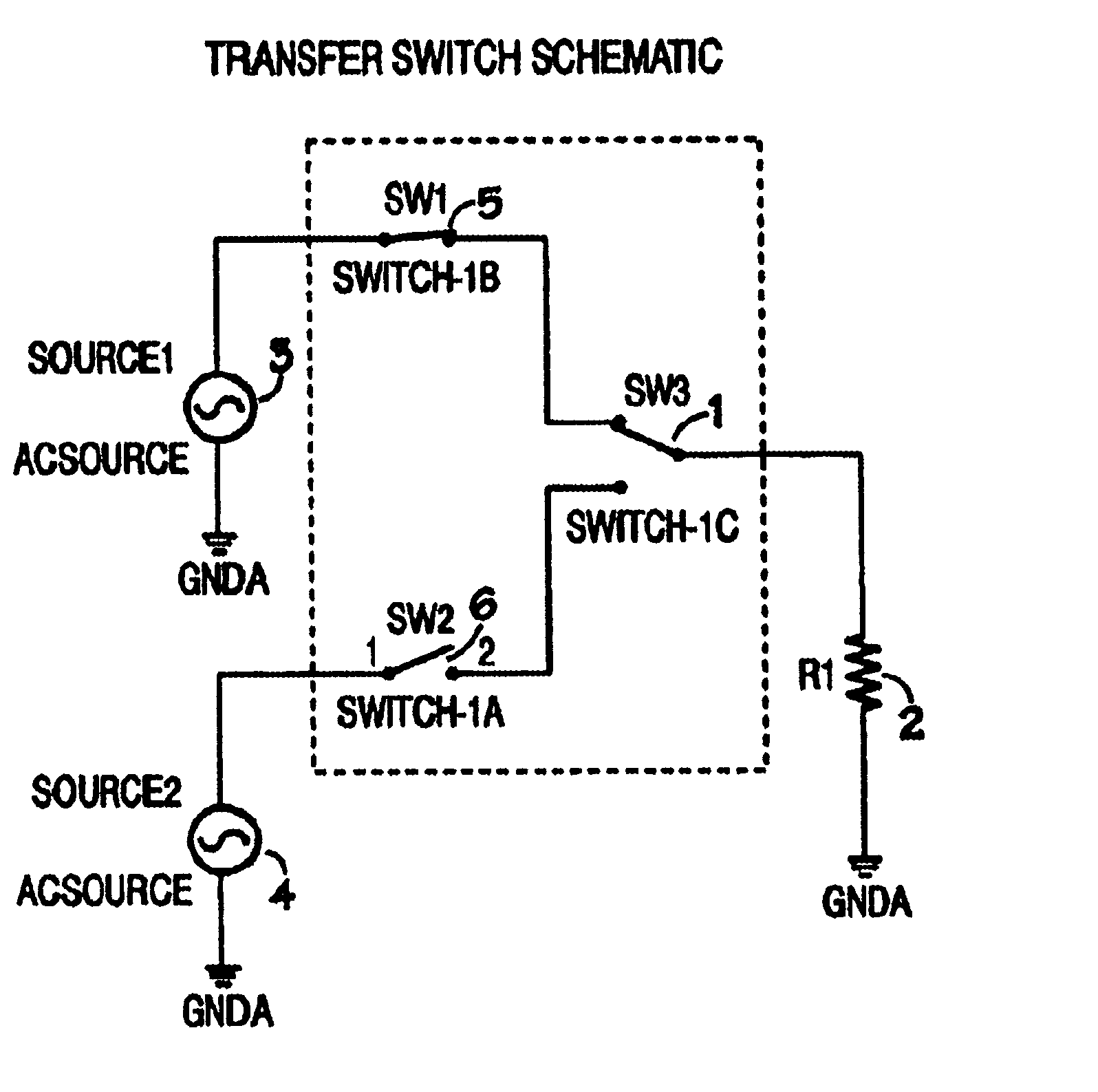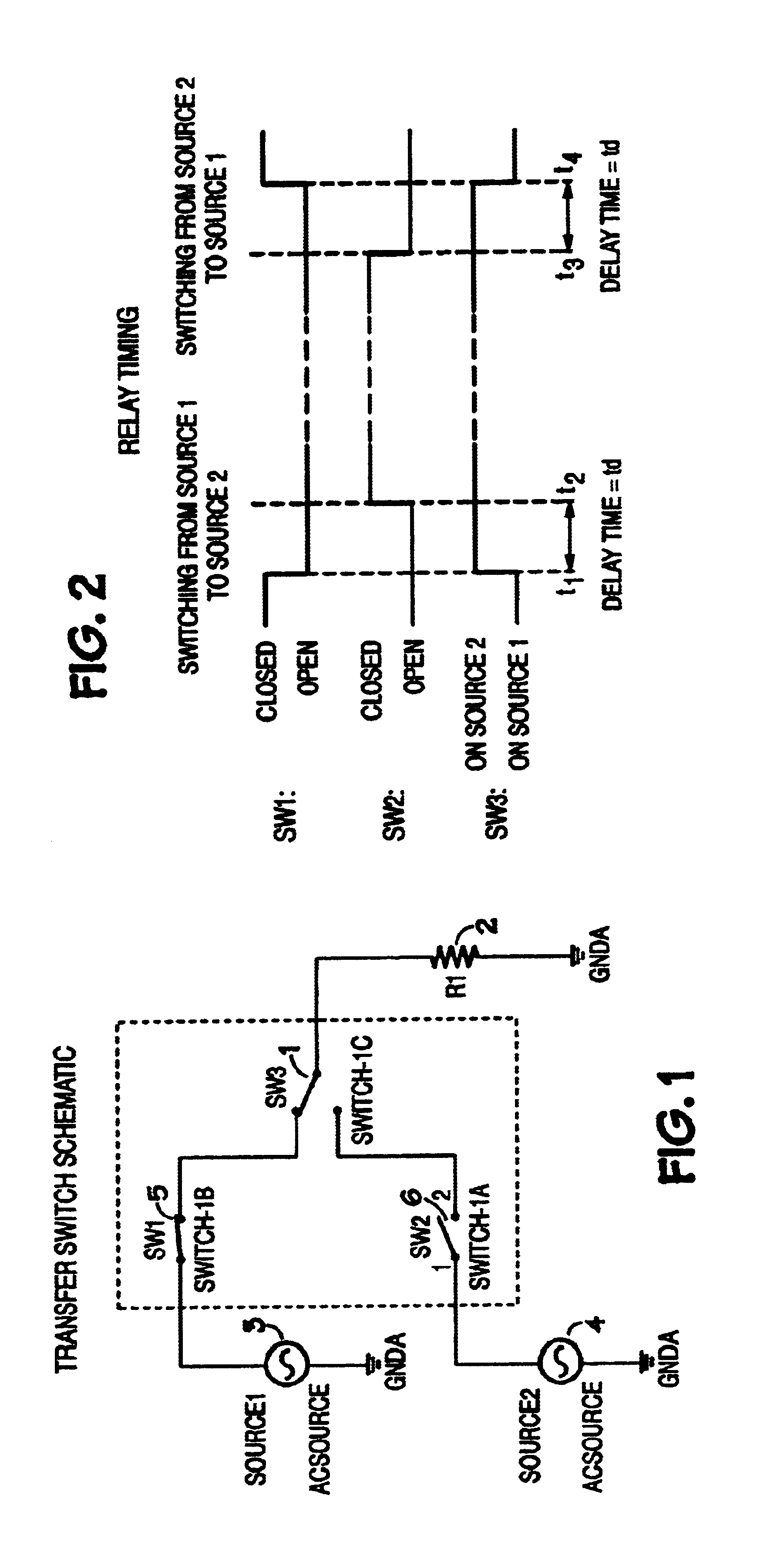Method and apparatus for transfer control and undervoltage detection in an automatic transfer switch
a technology of automatic transfer switch and transfer control, which is applied in the direction of dc source parallel operation, emergency power supply arrangement, transportation and packaging, etc., can solve the problems of catastrophic short circuit, potential backfeed problem, and the possibility of shock to the power pin on the end of the cord, so as to prevent undesirable cross-conduction and prevent undesirable cross-conduction
- Summary
- Abstract
- Description
- Claims
- Application Information
AI Technical Summary
Benefits of technology
Problems solved by technology
Method used
Image
Examples
Embodiment Construction
An automatic transfer switch in accordance with the present invention is illustrated in FIG. 1. Automatic transfer switch 7 connects first alternating current (“AC”) voltage source 3 and second AC voltage source 4 to load 2. For purposes of the following discussion, first AC voltage source 3 will be referred to as the primary source and AC voltage source 4 will be referred to as the secondary source. Under normal conditions, i.e., when primary source 3 is available, transfer switch 7 will connect primary source 3 to load 2. If primary source 3 fails, transfer switch 7 will automatically and rapidly connect second source 4 to load 2 to prevent disruption of power to load 2.
Automatic transfer switch 7 comprises switch 1, illustrated as a form C relay, as the primary transfer element. To minimize power disruption to the load, it is desirable that switch 1 switch as rapidly as possible upon failure of the normal source. However, rapid switching of switch 1 creates a potential shoot thro...
PUM
 Login to View More
Login to View More Abstract
Description
Claims
Application Information
 Login to View More
Login to View More - R&D
- Intellectual Property
- Life Sciences
- Materials
- Tech Scout
- Unparalleled Data Quality
- Higher Quality Content
- 60% Fewer Hallucinations
Browse by: Latest US Patents, China's latest patents, Technical Efficacy Thesaurus, Application Domain, Technology Topic, Popular Technical Reports.
© 2025 PatSnap. All rights reserved.Legal|Privacy policy|Modern Slavery Act Transparency Statement|Sitemap|About US| Contact US: help@patsnap.com



